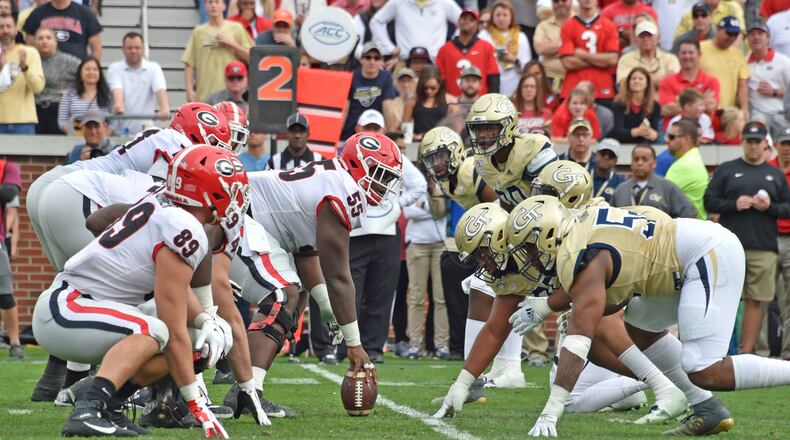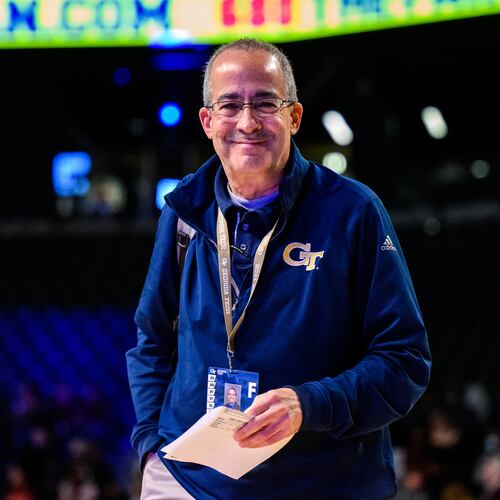The calendar tells us that college football’s time should be coming soon. Of course, the calendar also indicates that MLB division races should be shaping up.
The videoconference deliberations of university presidents and conference officials send a different message about college football’s proximity. Players and coaches were able to return to practice fields this week for the first time since March, steps toward the resumption of competition and a season this fall. However, what that season could look like in the Southeast will be revealed soon.
On Friday, Clemson athletic director Dan Radakovich reportedly told his school’s board of trustees that the ACC is expected to reach a decision on its fall sports seasons by Aug. 5, which also is the day that football teams can begin preseason camp. The SEC’s decision could similarly arrive over the next several days.
“But I will tell you that given the scope of the pandemic, this could be fluid the entire fall,” Radakovich said.
If the power conferences play this fall – and that’s not a certainty – it’s likely that the ACC, Big Ten, Big 12, Pac-12 and SEC all will use a format that is either conference-only or something close to it. The Big Ten and Pac-12 already have announced their plans to play only within conference, a model that enables the start of the season to be delayed and for conferences to have greater flexibility if it becomes necessary to alter schedules during the season.
The ACC, Big 12 and SEC are reportedly considering “plus one” scheduling models that would enable them to play a league schedule and then one non-conference game. The ACC may go with eight or 10 league games in a model that likely would include Notre Dame and be played without divisions. If an ACC Championship game were to be played, it would probably be between the top two finishers. Whether Notre Dame would be eligible for the league title is uncertain, a matter to be hashed out by the presidents of member schools.
The SEC could be moving to an eight-game league schedule with one non-conference game. The Big 12 may land on a nine-game league schedule with one non-conference game.
The space for a non-conference game would enable teams to protect games against non-conference rivals – namely, Tech and Georgia – or games that they’ve already scheduled.
The start of the season likely would be moved at least to late September and finish past the traditional conclusion of the regular season, the weekend of Thanksgiving.
Any decisions by leagues to shift to conference-only seasons should not be interpreted as guarantees that those seasons will be played. There is hope, certainly, that games can be played. However, a considerable benefit of reducing the number of games and pushing back the start of the season is the ability for leagues and schools to buy more time.
Whether that’s time to learn from the NFL’s attempts to practice and play with the coronavirus, to determine if the pandemic can be contained on college campuses or to hope that infection rates drop in the next several weeks, delaying the start of the season will provide school presidents and conference officials with more time before they will be required to make a yes-or-no call on the season.
As much as football players, coaches and fans (and athletic department financial officers) are desperately hoping for this to succeed, the inherent challenges in pulling off a fall season are clear. Just Friday, Michigan State placed its entire football team in quarantine for 14 days after a second staff member and one team member tested positive for COVID-19. The action affirmed again how tenuous – or even unlikely – the season could be given that these measures were necessary during the summer, before students returned for the semester.
Having a conference-only schedule with open dates built into it does provide leagues with room to accommodate potential disruptions such as Michigan State’s, but it’s not difficult to imagine multiple teams suffering similar fates and severely compromising the season, to say nothing of the health of a large swath of people.
Zach Binney, an epidemiologist at Oxford College of Emory University, said he was optimistic about the chances for a college football season a couple of months ago, but now is a pessimist.
“The biggest problem that college football has is it’s college,” he said. “So if they need college to be in session – which, I think, is a fair requirement for them to play – then their ability to play is going to rely on that. I’m worried about how that’s going to happen in an area of the country with a lot of virus when we bring college students back. I’m worried that we’re going to see a lot of outbreaks on college campuses, just because you’re bringing a lot of people from a lot of geographical areas into one place, and you’re not testing everybody every day or even every week at most places.”
Also, for all the planning that leagues and schools may be doing to construct schedules and backup plans, those intentions can be superseded by state governments or school presidents. Earlier this week, the Albuquerque (N.M.) Journal reported that governor Michelle Lujan Grisham urged the University of New Mexico and New Mexico State to suspend its fall sports seasons. In early July, South Carolina governor Henry McMaster warned that he would not permit college or high-school football to be played if the number of positive cases continued to rise.
Or, even if a team were able to stay coronavirus-free, if a campus outbreak led a school to send its students home for the semester, would the team continue to play?
Clearly, forces larger than college football are at play in this dynamic.
While the idea of moving the season to the spring isn’t popular, it’s certainly conceivable as an option. Simply, if college football can’t be played in the fall, playing in the spring is the next option for the game’s overseers to consider. Several lower-tier FCS leagues have made the decision to cancel their seasons because of health concerns.
A spring season might begin in February after the Super Bowl and end in May or June. It’s possible that the shortened conference-only schedules could be transported into the spring. One potential advantage of a spring season: If the pandemic were more broadly contained and/or a vaccine were developed, fans likely would be able to attend in greater numbers, not a small matter given the pressure on schools to generate revenue.
There are clear obstacles to this option, the most prominent being that, if a normal season were played in the fall of 2021, players’ bodies would be heavily taxed to play perhaps 22 games in less than 12 months. Another is that weather in February would not be conducive to playing football outside, particularly in the Northeast and Midwest. Also, players expecting to be selected in the NFL draft may well forego the season to protect themselves from the risk of injury.
However, as unappealing as the option may be, it’s possible that the spread of the virus may not give decision makers much of a choice.
The final option that lurks is the possibility that football won’t be able to played in the spring, either. There is hardly any guarantee that health conditions will be better in January and February than they are now. And if they’re not, would it be any wiser to play then than this fall?
“I think we have to do a much better job driving the number of cases down and having testing and contact tracing that can function to keep the virus under control,” Binney said. “We simply have too many cases and not enough tests and contact tracers in too many parts of the country.”
No football would be unequivocally damaging to the college athletics industry, so reliant upon the revenues generated by football through ticket sales and television contracts. The first several months of the shutdown imposed by the coronavirus has led to the elimination of dozens of Division I sports teams. It would figure only to worsen if athletic department budgets were deprived of football-related revenue.
The impact would hardly be financial alone, as thousands of football players – and athletes of all sports – would be denied opportunities to compete in sports they have dedicated their lives to playing. Likewise, for the millions of fans passionate about the game, not having football would be a considerable sacrifice. Altogether, it’s an overwhelming scenario to try to grasp.
But, it’s on the table. A most unusual year advances toward the fall with a most cherished element of American sports culture on shaky ground.
About the Author
Keep Reading
The Latest
Featured


